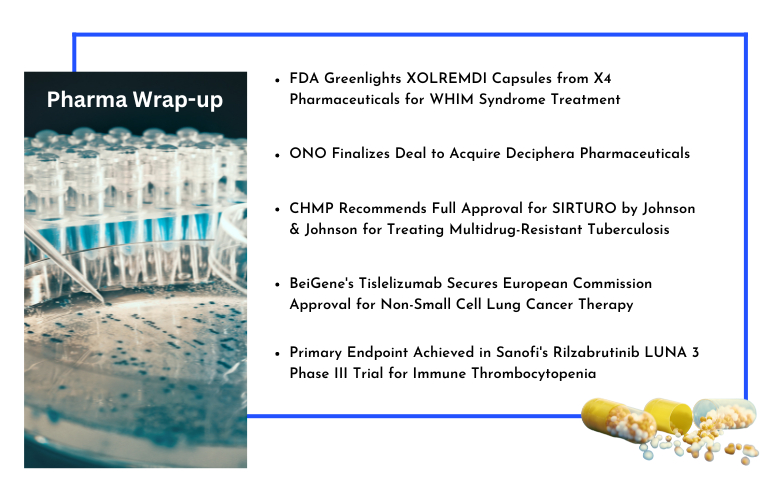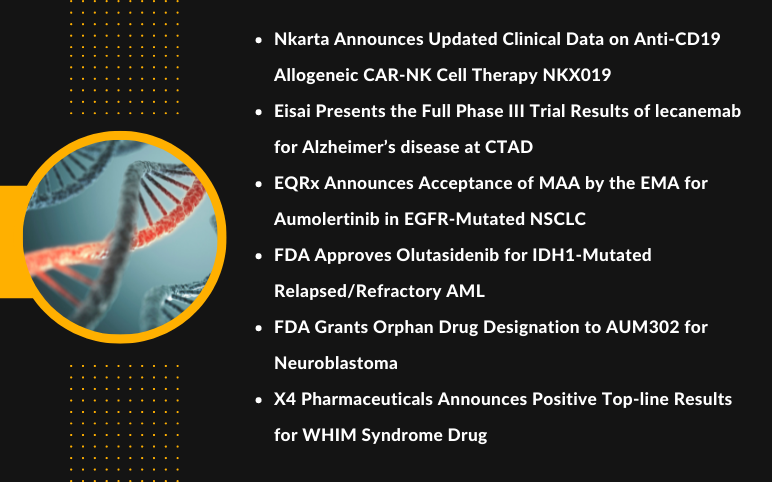Which Pipeline Therapy Will Change the WHIM Syndrome Treatment Market Scenario?
Sep 05, 2022
WHIM Syndrome possessing limited cures paves the way toward evolving demand for novel treatment therapies. Moreover, the increasing prevalence and R&D activities drive the WHIM syndrome treatment market forward.
As per DelveInsight’s latest WHIM Syndrome epidemiology report, there were approximately 180 diagnosed prevalent cases in the 7MM in 2021, with the US accounting for the highest number of cases.
Moreover, it has been observed that the disease affects females slightly more than males. WHIM syndrome treatment for patients is not standardized; however, it aims to mitigate hematologic defects and clinical symptoms associated with the disease, such as severe neutropenia.
Downloads
Click Here To Get the Article in PDF
Recent Articles
With an increasing number of infectious diseases, individuals with primary and secondary immunodeficiencies are disproportionately affected as their immune system does not function optimally and pose a higher risk for infections. Primary immunodeficiency diseases (PIDDs), also known as inborn errors of immunity (IEI), are chronic conditions in which part of the body’s immune system is missing or does not function correctly. These conditions are caused by hereditary genetic defects and can affect anyone, regardless of age, gender, or race.
The current WHIM syndrome treatment options can be mainly categorized into curative and symptomatic treatment. Hematopoietic stem cell transplantation (allogenic) is the only curative WHIM syndrome treatment available.
In contrast, the symptomatic treatment involves the exogenous administration of immunoglobulins (IVIg) given intravenous or subcutaneous G-CSF (Granulocyte-Colony Stimulating Factor) and supportive therapies.
As per DelveInsight analysis, the WHIM syndrome market was valued at around USD 7.3 million in 2019 and is expected to reach USD 55.4 million by 2032, growing at a significant CAGR. Furthermore, the WHIM Syndrome market dynamics are anticipated to change as several leading players such as Amgen, Sandoz (Novartis), Pfizer, Takeda, and X4 Pharmaceuticals are involved in developing therapies to improve the WHIM syndrome treatment landscape.
The current WHIM Syndrome treatment landscape: Urgent unmet need for safe and efficacious treatment
There are no disease-specific approved therapies for WHIM syndrome treatment. In suitable cases, allogeneic hematopoietic stem cell transplantation (HSCT) is a well-established treatment option for many PIDDs. It corrects neutropenia and immunodeficiency and resolves autoimmunity and recurrent infections in WHIM syndrome patients, including warts. However, allogenic-HSCT is not the first-choice WHIM syndrome treatment as it poses unique challenges, including high treatment-related post-HSCT mortality rate in the first 12 months, immune-mediated, and infectious (post-HSCT HPV) complications.
Major symptomatic WHIM syndrome treatments include G-CSF to correct neutropenia, immunoglobulin replacement to increase immunoglobulin G (IgG) levels, and antibiotics to treat acute bacterial episodes or prevent infections. While relatively safe, these products are inconvenient because of the need for repeated, prolonged subcutaneous or intravenous administration. G-CSF use is limited by a short half-life (<24 h) and the need for subcutaneous injection. Moreover, it often causes serious and debilitating bone pain due to quantitative and qualitative expansion of bone marrow, peripheral nociceptor sensitization to nociceptive stimuli, modulation of immune function, and direct effect on bone metabolism.
Additionally, warts remain refractory to treatment, and no treatment addresses the associated lymphopenia or monocytopenia. Hence there is an urgent unmet need for safe and efficacious therapy that addresses the underlying cause (CXCR4 gene defect) of this multifaceted disease.
Promising mavorixafor has the potential to be the first approved drug for WHIM Syndrome treatment
To cater to the unmet need in WHIM syndrome treatment, several leading companies across the globe are working to bring better WHIM syndrome therapies. The most promising WHIM syndrome therapy in the pipeline among them is mavorixafor by X4 Pharmaceuticals. Mavorixafor (X4P-001) is a potential first-class, once-daily, small oral molecule and selective antagonist of the CXCR4 receptor that increases the mobilization and trafficking of white blood cells from the bone marrow. The US FDA has granted Fast Track Designation, Breakthrough Therapy Designation, Orphan Drug Designation, and Rare Pediatric Disease Designation to mavorixafor WHIM syndrome treatment. It is currently in phase III WHIM syndrome clinical trials in patients aged 12 or older. If approved, mavorixafor is estimated to be launched in the US by 2024.
Another potential candidate in the WHIM syndrome pipeline includes the plerixafor of the National Institute of Allergy and Infectious Diseases (NIAID). Plerixafor (Mozobil, AMD3100) is a US FDA-approved product that mobilizes CD34+ hematopoietic stem cells to the peripheral blood for collection (in combination with G-CSF) and subsequent autologous transplantation in adult patients with non-Hodgkin’s lymphoma and multiple myeloma. In March 2019, the EMA’S Committee for Medicinal Products for Human Use (CHMP) adopted a positive opinion recommending label extension plerixafor for use in pediatric patients (1 to less than 18 years).
WHIM Syndrome – Future Treatment Market Landscape
The development of disease-specific WHIM syndrome therapies will auger for the market landscape, which, in turn, is likely to facilitate significant changes during the forecast period (2019–2032). In addition, with an improved diagnosis and safe and efficacious WHIM syndrome treatment options, the WHIM syndrome treatment market is projected to grow significantly.
However, the challenges of pricing and reimbursement, along with associated long-term side effects of approved WHIM syndrome therapies, are two major factors that are likely to influence the WHIM syndrome treatment market success of the upcoming therapies.

FAQs on WHIM Syndrome
WHIM disorder (warts, hypogammaglobulinemia, infections, and myelokathexis) is an ultra-rare and difficult-to-diagnose primary immunodeficiency disease. WHIM syndrome is an autosomal-dominant disease that is mostly caused by “gain-of-function” mutations in a single gene that encodes the CXCR4 receptor. It is characterized by clinical manifestations such as neutropenia, recurrent infections, warts, lymphopenia, bone marrow biopsy (myelokathexis), and CXCR4 gene mutation.
The WHIM syndrome symptoms constitute the symptoms of Warts, Hypogammaglobulinemia, Infections, and Myelokathexis. Individuals suffering from WHIM syndrome are more vulnerable to potentially fatal bacterial infections.
It is estimated that a patient suffering from WHIM Syndrome can have unaffected adulthood. Whereas, after the age of 40, the WHIM syndrome life expectancy reduces as the cancer risk increases up to 30 percent.
The current management options for WHIM syndrome treatment can be mainly categorized into curative and symptomatic treatment. Hematopoietic stem cell transplantation (allogenic) is the only available curative treatment, whereas symptomatic treatment involves the exogenous administration of immunoglobulins (IV/subcutaneous), G-CSF, and CXCR4 antagonists.
WHIM is not an autoimmune disease; rather, it is an autosomal-dominant disease mostly caused by “gain-of-function” mutations in a single gene that encodes the CXCR4 receptor.
Leading pharma companies such as Amgen, Sandoz (Novartis), Pfizer, Takeda, and X4 Pharmaceuticals are currently developing novel therapies for WHIM syndrome treatment.
Downloads
Article in PDF
Recent Articles
- PI3Kγ- a molecular switch that controls immune suppression
- World Immunization Week
- X4 Pharmaceuticals’ XOLREMDI FDA Approval; ONO to Acquire Deciphera Pharmaceuticals; Johnson &...
- X4 Pharmaceuticals’ XOLREMDI for WHIM Syndrome: First Targeted Treatment
- Nkarta’s Anti-CD19 Allogeneic CAR-NK Cell Therapy, NKX019; Eisai Presents Results of lecanemab fo...



